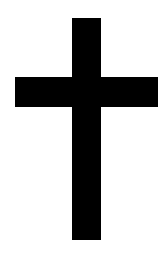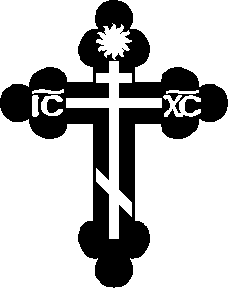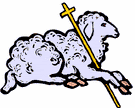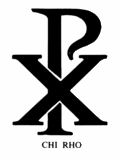ACT 1 SCENE 1: Bernardo, Marcellus, Horatio see the ghost of Hamlet's father and decide to tell Hamlet what they've seen ACT 1 SCENE 2: Claudius and Gertrude decide that Hamlet has gone mad. Horatio, Marcellus, and Bernardo tell Hamlet about the ghost they saw and how they thought it was Hamlet's father and Hamlet tells them that he will meet them at midnight to see the ghost himself. ACT 1 SCENE 3: Ophelia tells her brother Laertes about Hamlet's supposed advances towards her. She then tells her father, Polonius who gets really upset. ACT 1 SCENE 4: Hamlet, Horatio, and Marcellus meet at midnight and wait for the ghost to appear. When the ghost does appear and Hamlet speaks to it the ghost doesn't answer, only beckons for Hamlet to follow. Hamlet follows against Horatio and Marcellus' advice to not. After they leave Marcellus and Horatio decide to follow in case Hamlet should need help. ACT 1 SCENE 5: Hamlet follows the ghost and finally the ghost speaks when Hamlet demands that he won't follow anymore unless he answers. The ghost says that he doesn't have much time to explain. He is Hamlet's father. He says that Hamlet must solve his murder. The ghost tells him that his uncle, who is now the king, was the one who killed him. He says that his uncle killed him and married his widowed wife to become king. The ghost then leaves right before Horatio and Marcellus enter. They ask what happened, but Hamlet refuses to tell, but makes them swear (with the ghosts help) to never repeat what happened/what they saw that night. ACT 2 SCENE 1: ACT 2 SCENE 2: ACT 3 SCENE 1: ACT 3 SCENE 2 ACT 3 SCENE 3 ACT 3 SCENE 4 ACT 4 SCENE 1 ACT 4 SCENE 2 ACT 4 SCENE 3 ACT 4 SCENE 4 ACT 4 SCENE 5 ACT 4 SCENE 6 ACT 4 SCENE 7 AC 5 SCENE 1
Newest Assignments and Dates (If assignment is online it shall be stated below)
- 03-17-2008 - 03-21-2008 -Spring Break (FREEDOM)
- 03-21-2008 -Art History Outline and images
- Still during spring break: Read Lord of the Flies for techniques/devices, 3 allusions due.
Thursday, November 29, 2007
AP Lit- Hamlet-Act/Scene Notes
Posted by
Christina
at
11/29/2007 11:38:00 PM
13
comments
![]()
![]()
Tuesday, November 27, 2007
Art History -Chap 7 - Images part 2
7-8 Good Shepherd, Orants, and story Jonah
Painted Ceiling of the catacomb of saints Pierto and Marcellion, Rome, 4th century. Has a central medallion and four lunettes. The center holds the Good Shepherd with a Greek like pose, it was taken from the idea that Jesus said that he was a good shepherd . The four lunettes contain the story of Jonah, which is sometimes interpreted as the death of Christ. In between the lunettes are Orants, figures with raised hands as a symbol of prayer.
7-5 Wall with Torah niche
From a house-synagogue, Dura-Europos, Syria. 244-245. Tempera on Plaster. A synagogue is a Jewish place of worship, this one was built like a house, this one was built like a house. It contains an assembly hall, a niche to hold the Torah, an alcove for women, and a courtyard. After it was finished residential rooms were added. The two architectural things that stood put in the assembly hal, a bench along the walls and a niche for the torah.
7-16 Mausoleum of Galla Placidia, Ravenna
Italy. C. 425-426. Funerary chapel attached to the Church of the imperial palace. Made when Galla Placida was regent for sane. It was believed that her and her family were buried there, Made in Cruciform with a barrel vault on each of the arms and pendentive domes they are not visible from the exterior because of the shape of the roofs. On the exterior there was a cornice and blind arcading.
7-12 Parting of Lot and Abraham
Mosaic in the nave arcade, Church of Santa Maria Maggione, Rome 432-40, 4’11” x 6’8”. From a story from the first book of the first book of the scriptures were they had grown too many so lot part the group with a group of people to Jordan while Abraham stayed in Canaan. The parting between the too man is shown by their separation. The Mosaic references to the Roman illusionist style in the 3-d figures in the background, with the people sheep and blue sky made with pieces of marble glass.
Expired
Posted by
cinnia
at
11/27/2007 09:56:00 PM
0
comments
![]()
![]()
Labels: Art History, images
Sunday, November 25, 2007
Art History -Chap 7 Study Guide-
Materials and Techniques Diagrams The Dove: A symbol of purity, resembling peace when it is shown bearing an olive branch, a white dove is the symbolic embodiment of the Holy Spirit The Fish: One of the earliest symbols for Jesus Christ. Because of its association with baptism in the water it is a symbol for all Christians The Lamb: Symbolizes Jesus' sacrifice on the cross as the Lamb of God, a flock of sheep represent the apostles The Four Evangelists: Saint Matthew is represented as an angel, Saint Mark is a lion, Saint Luke an Ox, and Saint John is shown as an eagle. The Monogram of the Chi-Rho: The initials 'X' and 'P' that make up the Chi-Rho were the first two Greek letters of the word Christos. The emblem was sometimes seen enclosed by a halo The Crosses: Latin, Greek & Roman: Symbolizes the suffering and triumph of Jesus' crucifixion and the resurrection of Christ Early Christian Church Plans



- Basilican Plan Church: COPIED PIC FROM BOOK
- Central Plan Church: COPIED PIC FROM BOOK
Compare and Discuss
- Dura Europos is the site of both a house-synagogue and a house-church. The synagogue survived primarily to the fact that it was infilled to strengthen the city's fortifications. The synagogue was built like a house and contained an assembly hall with a niche for torah scrolls, an alcove for women, and a courtyard. Jewish murals filled the synagogue's interior. They included narratives and symbolic scenes of Jewish history. The church was a typical Roman house with rooms and a courtyard and a second floor apartment. Artwork included murals above a niche with a water basin for baptism depicting the Good Shepherd and of Adam and Eve.
- The Santa Maria Maggiore was dedicated to the Virgin Mary. The mosaics show a renewed interest in the earlier classicizing style of Roman art. Mosaics along the nave wall illustrate Old testament stories of the Jewish patriarchs and heroes. Decorations in the church were meant to praise God through their splendor. It uses the basilca-plan.
The San Vitale uses the central plan. The design is a central-domed octagon extended by exedra-like semicircular bays. The whole of the domes rests on eight squinches and large piers. Artwork here include an image of Christ enthroned in the apse. Other images relate to its celebration of the Eucharist.
- The Pantheon appeared to be like any other classical temple as you approach it so the ornate and grand dome you see inside is not excepted. The Hagia Sophia is as grand outside as it is in. The exterior tells you have splendid the interior is. You have view of the dome and the half domes. The Hagia Sophia lacks the oculus of the Pantheon. Also instead on niches the dome of the Hagia Sophia has a band of windows at the base giving the dome the appearance it was floating.
Good Shepherd | Transfiguration of Christ | Christ Pantokrator | |
Here Christ is shown as a shepherd in imperial robes, a crowned halo, and carrying a staff with a cross on the top | Here Christ is shown standing in a blue halo that surrounds him and a gold halo that surrounds his head. He emits rays of light and stands beside the prophets Moses and Elijah. | Combines two persons: father and son; judge and savior. Christ is shown once again with a halo surrounding his head. Here he carries a bible | |
- The Katholikon is connected to the Theotokos. It lies on a central plan. Its dome is supported by squinches. It also contains a complex variety of forms such as domes, groin vaults, barrel vaults, pendentives, and squinches
The Santa Constanza consists of a rotunda and an ambulatory. It has Composite capitals and entablature blacks that support the arcade and dome. Interior is sheathed in mosaics and fine marble.
Posted by
Christina
at
11/25/2007 08:12:00 PM
0
comments
![]()
![]()
Labels: Art History, Study guide






